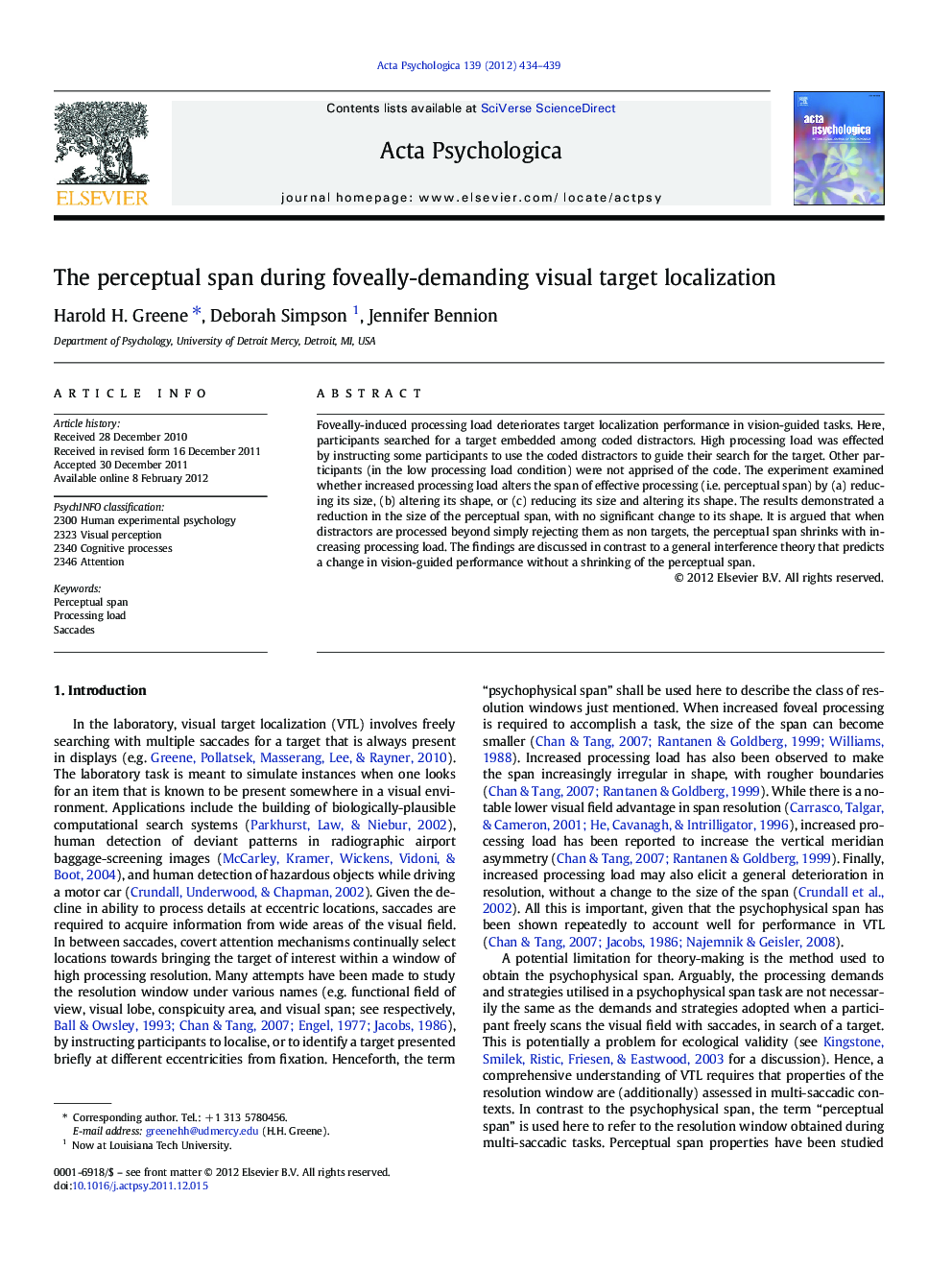| Article ID | Journal | Published Year | Pages | File Type |
|---|---|---|---|---|
| 920056 | Acta Psychologica | 2012 | 6 Pages |
Foveally-induced processing load deteriorates target localization performance in vision-guided tasks. Here, participants searched for a target embedded among coded distractors. High processing load was effected by instructing some participants to use the coded distractors to guide their search for the target. Other participants (in the low processing load condition) were not apprised of the code. The experiment examined whether increased processing load alters the span of effective processing (i.e. perceptual span) by (a) reducing its size, (b) altering its shape, or (c) reducing its size and altering its shape. The results demonstrated a reduction in the size of the perceptual span, with no significant change to its shape. It is argued that when distractors are processed beyond simply rejecting them as non targets, the perceptual span shrinks with increasing processing load. The findings are discussed in contrast to a general interference theory that predicts a change in vision-guided performance without a shrinking of the perceptual span.
► Increased processing load alters performance in vision-guided tasks. ► The perceptual span is well researched for text reading. ► The perceptual span is not well researched for visual target localization (VTL). ► For VTL, the span shrinks with increased foveally-demanding processing load. ► Span reduction occurs in contrast to a general interference in the visual field.
